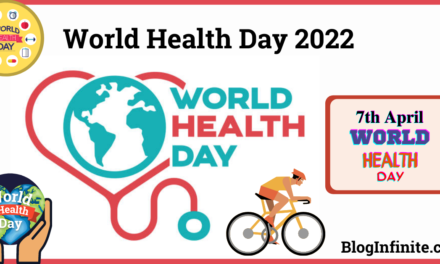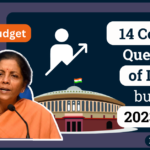Table of Content
Malaria is a mosquito-borne infectious disease caused by Plasmodium parasites. It’s transmitted by the bite of an infected mosquito. This blog will cover the significance of world Malaria Day, the history of malaria, the theme for 2022, symptoms and preventive measures of this disease, the different types of malaria and how India is celebrating World Malaria Day, 2022. [1]
Significance Of World Malaria Day
The yearly recognition was held on April 25 to bring issues to light of the worldwide work to control and eliminate deadly malaria. World Malaria Day, which began in 2008, evolved from Africa Malaria Day, which has been marked by African nations since, 2001. At the 60th meeting of the World Health Assembly (a gathering supported by the World Health Organization [WHO]), it was recommended that Africa Malaria Day be changed to World Malaria Day to acknowledge the presence of malaria around the globe and to carry more noteworthy attention to the worldwide battle against the sickness. [2]
History Of Malaria
Malaria holds an uncommon spot in the records of history. Over centuries, its casualties have included Neolithic inhabitants, initial Chinese and Greeks, sovereigns and beggars. In the twentieth century, malaria asserted between 150 million and 300 million lives, representing 2 to 5 per cent of overall death. [3]
Despite being the leading cause of death in sub-Saharan Africa, the Amazon basin, Asia, and other tropical regions, Malaria still affects about 40% of the world’s population. [4]
Symptoms Of Malaria
Malaria is a very common disease throughout tropical and subtropical regions of the world. Symptoms can range from mild to life-threatening and include fever, chills, sweating, headache, body aches, and diarrhoea. If left untreated, malaria can cause seizures, coma, and death. In pregnant women, the disease can also lead to miscarriages or stillbirths.
Types Of Malaria
There are majorly four types of malaria:
1. Plasmodium vivax: This is the most common type of malaria and is found in Asia, Africa, and South America.
2. Plasmodium falciparum: This is the most dangerous type of malaria and is found in Africa and parts of Asia.
3. Plasmodium ovale: This type of malaria is found in Africa and parts of Asia.
4. Plasmodium malaria: This is the least common type of malaria and is found in Africa, Asia, and South America.

Causes Of Malaria
Malaria cannot be contracted simply by being in the presence of someone who has the infection. It is transmitted when an individual is bitten by an infected Anopheles mosquito. It’s the only variety of mosquitoes capable of transmitting malaria. The mosquito gets infected when it bites an infected person and draws blood containing the parasite. The individual who is bitten by the insect becomes infected.
The Impact Of Malaria On India
Malaria has been a severe issue in India for quite a long time. [5] Descriptions of this illness can be found even in the antiquated Indian clinical writing like the “Atharva Veda” and “Charaka Samhita”. The latter half of the 1930s was a period of malaria outbreaks in almost every aspect of life. [6] Around one-fourth of India’s population was affected by malaria in the late nineteenth and early twentieth centuries, especially in Punjab and Bengal. An estimated Rs. 10,000 million in annual losses were attributed to malaria-related lost man-days in 1935.
Around 75 million people were estimated to contract malaria every year during the time of independence in 1947, with a direct mortality rate of 0.8 million per year among a population of 330 million. A national malaria control program was launched by the Indian government in April 1953 to combat this threat. [7] The programme become a huge success but later in the 1960’s it suffered a major setback due to technical and operational problems. [8] With time, malaria returned with new features. But with constant determination, today India has been able to control malaria to a great extent.
How India Is Celebrating On World Malaria Day
For school students in all of India, National Center for Vector-Borne Diseases Control (NCVBDC) proposes to hold an online competition for poster making and slogan writing. [9] The competition is divided into two main categories.
- A panel will pick the top entries from an all-India poster making competition for school pupils.
- The winning artwork will be posted along with Malaria-related information via the Ministry of Health and Family Welfare’s (MoHFW) Twitter handle.
Measures To Prevent Malaria
Malaria is a preventable and treatable disease caused by a parasite that is transmitted to people through the bites of infected mosquitoes. If you reside or visit a region where malaria is frequent, consult a doctor about having malaria treatments. [10] You must take the medications prior, throughout, and after your visit.
Measures should be considered to prevent insect bites. You can take the following steps to lower the risk of malaria –
- Use mosquito repellent containing DEET (diethyltoluamide) on bare skin.
- Hang mosquito netting across mattresses.
- Install window and door shields.
- Be sure to use insect repellent when treating clothing, mosquito nets, tents, sleeping bags, and other fabrics
- Wear trousers as well as sleeved tops to keep your skin covered.
On World Malaria Day, let’s come together and be a part of a global community to raise awareness and take action to protect people from this deadly disease.
EndNotes
1. It is spread to humans through the saliva of infected female Anopheles mosquitoes.
2. The occasion was used to examine work regarding targets aimed at curbing malaria and lowering its death rate in African countries.
3. Alphonse Laveran, an expert in anatomic pathology and a military doctor in France, detected the malaria infection in 1880 at the military hospital in Constantine, Algeria.
4. Malaria was once thought to be caused by polluted air from marshlands. However, since Louis Pasteur discovered that most contagious illnesses are transmitted by bacterial germs, the notion of a bacterial origin of malaria grew more appealing.
5. In India, about 1.3 million inhabitants are at severe risk of transmitting malaria. India accounts for 2% of the worldwide malaria case strain and 2% of the mortality rate.
6. India also shares 85.2 per cent of the prevalence rate in South East Asia, which is significant given that India holds 47 per cent of the global P. vivax malaria burden, making the country crucially essential to global malaria eradication, especially in the South Asian region.
7. According to the National Malaria Eradication Programme (NMEP), 6.45 million cases were reported, the highest number since the resurgence of malaria.
8. With early trends in 1990, the country records around 1million cases yearly.
9. To know more about the ongoing competition, visit – innovateindia.mygov.in
10. Every year, it kills more than 400,000 people – mostly children in Africa.
If you have any queries regarding this blog you can comment down below and also can contact us on our contact page. If you Want to write for us you can apply for it at Write For Us.














